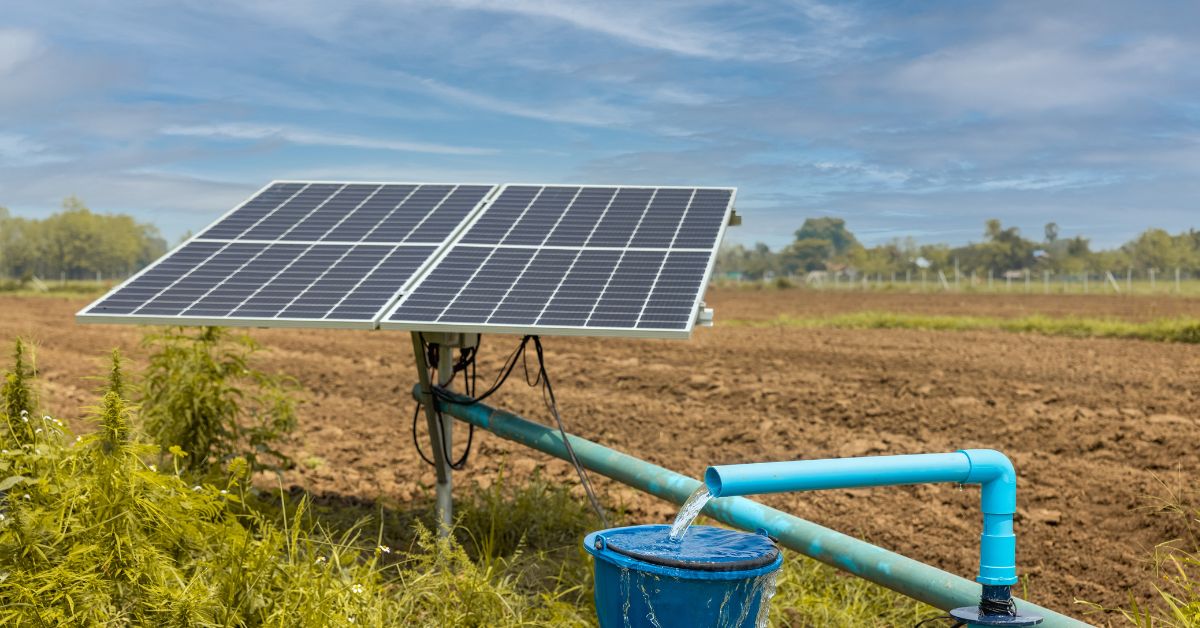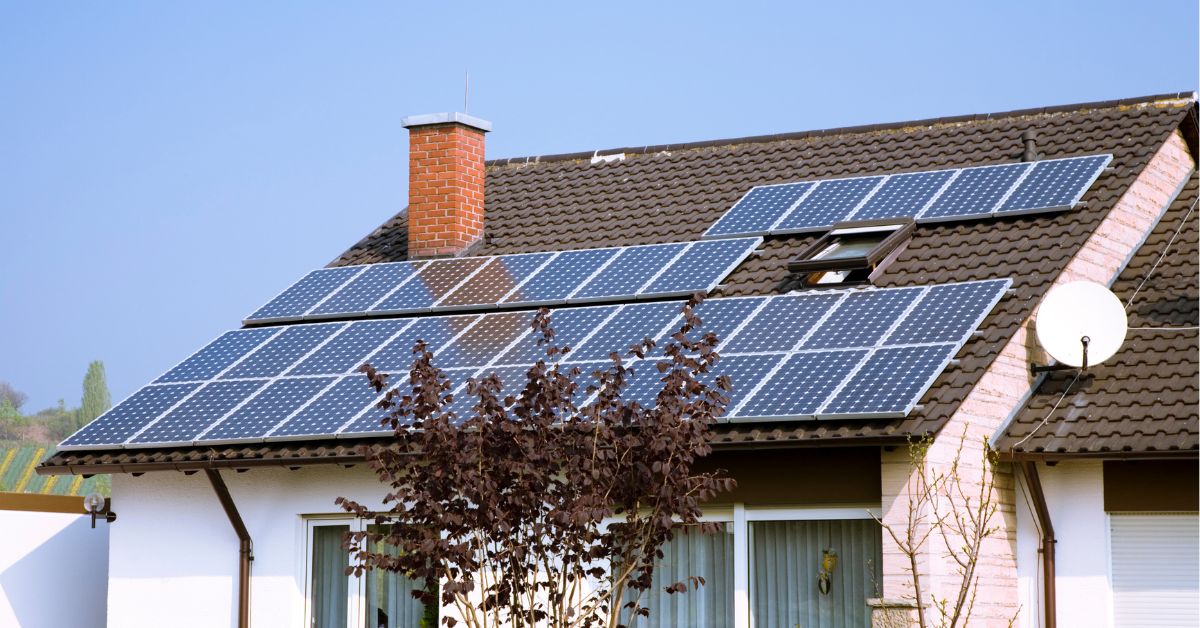Clean Solar Panels Without Water
Clean Solar Panels Without Water is an innovative, eco-friendly solution designed to maintain solar panel efficiency without the need for water-based cleaning methods. Utilizing advanced dry cleaning technology, it gently removes dust, dirt, and debris that accumulate on panels, ensuring optimal sunlight absorption and energy output.
This system is ideal for arid regions where water scarcity is a concern, reducing environmental impact and conserving precious resources. By eliminating the need for detergents or water, it provides a cost-effective, low-maintenance alternative, promoting sustainable energy practices while maximizing the performance and lifespan of solar panels.
Table of Contents
Clean Solar Panels Without Water: The Future of Solar Panel Maintenance
The global push for renewable energy has led to the rapid proliferation of solar panels worldwide. Solar energy is a reliable, cost-effective, and sustainable alternative to fossil fuels, making it an increasingly popular choice for residential, commercial, and industrial energy needs. However, one often overlooked aspect of solar panel efficiency is cleanliness. Solar panels, when clean, perform at optimal capacity. When they become dirty due to dust, debris, bird droppings, or pollution, their efficiency drops significantly. Traditional methods of cleaning solar panels often involve the use of water, but in many regions where solar panels are most beneficial, water is a scarce and precious resource. This brings us to the importance of learning how to clean solar panels without water.
Water-free solar panel cleaning methods are gaining traction due to their sustainability, cost-effectiveness, and practicality, especially in arid regions. This blog will explore various methods of cleaning solar panels without water, their advantages, and the future implications of waterless cleaning technology for solar energy systems.
The Impact of Dirt on Solar Panel Efficiency
Before delving into the various waterless cleaning methods, it’s important to understand why keeping solar panels clean is critical. Solar panels rely on the sun’s rays to generate electricity. When panels are dirty, a portion of the sunlight is blocked from reaching the photovoltaic (PV) cells, reducing the system’s overall efficiency. According to studies, dirty solar panels can lose between 5% and 20% of their efficiency, depending on the level of contamination. This can lead to reduced energy output, higher energy costs, and a longer return on investment.

Dust is the most common culprit, especially in desert areas where solar farms are most prevalent. Additionally, pollution in urban areas, bird droppings, leaves, and even snow can accumulate on solar panels, hindering their performance. Therefore, regular cleaning is necessary to maintain their efficiency, but traditional water-based cleaning methods are not always the best solution.
The Problem with Water-Based Solar Panel Cleaning
Water-based cleaning methods, while effective, have several significant drawbacks. These include:
- Water Scarcity: Many solar farms are located in arid or semi-arid regions where water is scarce. Using precious water resources to clean solar panels can strain local water supplies.
- High Costs: Water-based cleaning methods often require specialized equipment and labor, which can be expensive, especially for large solar installations.
- Risk of Damage: Improper cleaning with water can lead to damage to the solar panels or their wiring. High-pressure water jets, for example, can cause microcracks in the glass or damage to the electrical components of the solar panel.
- Wastewater Issues: The use of water for cleaning generates wastewater, which can carry harmful chemicals or pollutants. In areas without proper wastewater treatment, this can lead to environmental damage.
Given these challenges, there has been a growing interest in finding ways to clean solar panels without water.
Waterless Solar Panel Cleaning Methods
1. Automated Robotic Cleaners
One of the most promising methods of cleaning solar panels without water is the use of automated robotic cleaners. These robots are designed to move across the surface of the panels and use brushes or microfiber cloths to remove dirt and debris. They can operate autonomously or be remotely controlled, and they often come equipped with sensors to detect when the panels need cleaning.

Advantages:
- No Water Usage: Robotic cleaners do not require any water, making them ideal for use in dry regions.
- Low Labor Costs: Once installed, these robots can operate without human intervention, reducing labor costs.
- Consistent Performance: Robots can be programmed to clean the panels regularly, ensuring consistent performance and maximum energy output.
Disadvantages:
- Initial Investment: The cost of purchasing and installing robotic cleaners can be high, especially for large solar farms.
- Maintenance: Like any mechanical device, robotic cleaners require regular maintenance to ensure they continue to operate efficiently.
2. Electrostatic Cleaning
Electrostatic cleaning is a technology that uses static electricity to remove dust and debris from the surface of solar panels. This method works by creating an electric charge on the surface of the panel, which repels dust particles. The particles are then attracted to a collection plate, leaving the panel clean.
Advantages:
- No Water or Chemicals: Electrostatic cleaning does not require any water or cleaning chemicals, making it an environmentally friendly option.
- Non-Contact: Since the cleaning process does not involve physical contact with the panels, there is no risk of damage to the delicate surface of the PV cells.
Disadvantages:
- Limited Availability: Electrostatic cleaning technology is still in its early stages of development and is not yet widely available.
- Power Requirements: The system requires electricity to generate the static charge, which can be a drawback for off-grid solar installations.
3. Nanocoatings
Nanocoatings are a relatively new technology that involves applying a thin, invisible layer of material to the surface of solar panels. These coatings are hydrophobic, meaning they repel water and dirt, making it difficult for debris to stick to the panels. While this doesn’t technically clean the panels, it reduces the accumulation of dirt and makes them easier to clean with other methods.
Advantages:
- Long-Lasting Protection: Once applied, nanocoatings can last for several years, reducing the need for frequent cleaning.
- Water Repellent: Nanocoatings make it easier for rainwater or dew to wash away dirt and debris naturally.
Disadvantages:
- Cost: The initial cost of applying nanocoatings can be high, and reapplication may be necessary over time.
- Limited Effectiveness in Dry Climates: In areas where it rarely rains, the hydrophobic properties of nanocoatings may not be as effective at keeping the panels clean.
4. Air Blowers
Air blowers are a simple and effective way to remove loose dust and debris from solar panels. Compressed air is used to blow the dust off the surface of the panels, preventing it from accumulating and reducing efficiency. This method is commonly used in desert regions where dust storms are frequent.
Advantages:
- Simple and Inexpensive: Air blowers are a low-cost solution that can be implemented quickly and easily.
- No Water or Chemicals: Like other waterless methods, air blowers do not require any water or chemicals, making them environmentally friendly.
Disadvantages:
- Limited Effectiveness: Air blowers are only effective for removing loose dust. They may not be able to remove stubborn dirt or bird droppings.
- Manual Operation: In most cases, air blowers need to be operated manually, which can be labor-intensive for large installations.
5. Vibrational Cleaning
Vibrational cleaning is a novel approach that involves using vibrations to shake off dust and debris from the surface of solar panels. This method is still in the experimental stage, but early results have shown promise. By generating small, controlled vibrations, the dirt is loosened and falls off the panels, leaving them clean without the need for water or chemicals.
Advantages:
- No Water or Chemicals: Like other waterless methods, vibrational cleaning does not require any water or chemicals.
- Non-Contact: The vibrations do not make direct contact with the panels, reducing the risk of damage.
Disadvantages:
- Technology Still in Development: Vibrational cleaning is not yet widely available, and further research is needed to determine its effectiveness and long-term viability.
6. Brush Cleaning
Brush cleaning is a straightforward method that uses specially designed brushes to sweep dirt and debris off the surface of the solar panels. These brushes can be attached to automated systems, drones, or manually operated tools.
Advantages:
- No Water or Chemicals: Brush cleaning relies solely on mechanical action to remove dirt, making it a waterless solution.
- Effective for Stubborn Dirt: Brushes can be more effective than air blowers or nanocoatings for removing stubborn dirt, such as bird droppings.
Disadvantages:
- Risk of Scratches: If not done carefully, brush cleaning can scratch the surface of the solar panels, reducing their efficiency.
- Manual Labor: In many cases, brush cleaning requires manual labor, which can be time-consuming and costly for large solar farms.
Future Innovations in Waterless Solar Panel Cleaning
As the demand for solar energy continues to grow, so does the need for more efficient and sustainable cleaning methods. Several new technologies are being developed that could revolutionize the way we clean solar panels in the future. Some of these innovations include:

- Self-Cleaning Solar Panels: Researchers are working on developing self-cleaning solar panels that use advanced materials and coatings to repel dirt and dust automatically. These panels could eliminate the need for manual or robotic cleaning altogether.
- Solar Panel Cleaning Drones: Drones equipped with cleaning tools and sensors could be used to clean large solar farms more efficiently. These drones could operate autonomously, reducing the need for human labor.
- Advanced Robotics: As robotics technology continues to advance, we can expect to see more sophisticated robotic cleaning systems that are faster, more efficient, and less expensive.
- Sustainable Cleaning Solutions: Researchers are also exploring the use of biodegradable cleaning agents and other environmentally friendly solutions that can be used in conjunction with waterless cleaning methods.
Environmental and Economic Benefits of Waterless Cleaning
Switching to waterless solar panel cleaning methods offers several environmental and economic benefits. These include:
- Water Conservation: By eliminating the need for water, waterless cleaning methods help conserve this valuable resource, especially in arid regions where water is scarce.
- Reduced Costs: Waterless cleaning methods can reduce the costs associated with water use, labor, and wastewater treatment, making solar energy systems more cost-effective in the long run.
- Increased Efficiency: Regular cleaning, even without water, ensures that solar panels continue to operate at maximum efficiency, increasing energy output and reducing the overall cost of electricity generation.
- Longer Lifespan for Solar Panels: Gentle, non-contact cleaning methods reduce the risk of damage to solar panels, helping them last longer and reducing the need for costly replacements.
FAQs About Clean Solar Panels Without Water
Q1. Why should I clean solar panels without water?
Water-free cleaning methods reduce water consumption, making it environmentally friendly and ideal for areas facing water scarcity. They also prevent mineral buildup on panels, which can happen with water-based cleaning.
Q2. What are the most effective dry methods for cleaning solar panels?
The most effective dry cleaning methods include using microfiber cloths, soft-bristled brushes, and specialized solar panel cleaning pads or robots. Compressed air and electrostatic dusters are also effective for removing light dust.
Q3. Do dry cleaning methods damage solar panels?
No, when done properly with soft, non-abrasive materials, dry cleaning methods are safe and won’t scratch or damage solar panels.
Q4. How often should I clean my solar panels without water?
The frequency depends on your location and weather conditions. In dusty areas, panels may need to be cleaned every 1-3 months. In less dusty areas, twice a year might be sufficient.
Q5. Can dry cleaning maintain the efficiency of solar panels as effectively as water cleaning?
Yes, when done regularly, dry cleaning can maintain panel efficiency by removing dirt, dust, and debris. It’s especially effective in areas where water leaves residue or streaks.
Q6. What equipment is required for water-free solar panel cleaning?
Essential tools include microfiber cloths, soft brushes, and telescopic poles. Automated cleaning robots are also becoming popular for larger installations, providing efficient dry cleaning without manual effort.
Q7. Are there automated solutions for waterless solar panel cleaning?
Yes, robotic systems are available that can clean solar panels without water. These robots use brushes, air blowers, or electrostatic tools to remove dust and debris.
Q8. How do weather conditions affect the dry cleaning of solar panels?
Rain can naturally help clean panels, but in arid regions, dust accumulation is common. Dry cleaning is effective after sandstorms or heavy dust events to ensure optimal solar absorption.
Q9. Can I use compressed air to clean solar panels?
Yes, compressed air is an effective method to blow off loose dust and dirt. It’s a quick solution for light cleaning but may not be sufficient for stubborn grime.
Q10. Are waterless cleaning methods more expensive than traditional cleaning?
While the initial investment in specialized equipment (like robots) may be higher, over time, waterless cleaning can be more cost-effective due to lower maintenance costs, water savings, and fewer risks of water damage.
Waterless solar panel cleaning is not just a necessity in water-scarce regions; it is an essential component of sustainable solar energy systems worldwide. With advances in robotic cleaners, nanotechnology, electrostatic cleaning, and other innovative methods, it is now possible to maintain solar panel efficiency without relying on water. These technologies not only help conserve water but also reduce costs, improve efficiency, and extend the lifespan of solar panels.
As solar energy continues to play a crucial role in the global shift towards renewable energy, finding efficient and sustainable ways to maintain solar panels will become increasingly important. By adopting waterless cleaning methods, we can ensure that solar energy systems remain cost-effective, environmentally friendly, and efficient for years to come.
Click here to learn more about Clean Solar Panels Without Water

